María Félix: la Doña




María Félix, one of the most famous stars of Mexican cinema, was born in the “municipio” of Álamos, baptized in the local church, and spent her early years on the ranch of her grandparents, el Quiriego, on the outskirts of Álamos. All of her life she spoke with affection of Álamos and her childhood, and visited this community several times over the years. She was ninth of 11 children, and her beauty became recognized after her family moved to Guadalajara and she became the “school queen.” She married at 17, began her movie career in Mexico City at 18, and had her only child, Enrique, at 20. In a career spanning more than 30 years, she was a seductive leading lady in many of the most famous films produced in Mexico: “La Mujer sin Alma (1944), “La Devoradora” (1946), and “Enamorada” (1948), among many others.
She made movies in France and Spain in addition to Mexico, and Hollywood wanted her as well. She was offered roles in the “Road to” movies with Bob Hope and Bing Crosby, but turned down all the offers. Her last film was “La Generala” in 1966, although she worked in television in the 1970s. Her son died in 1996, but “La Doña” reached the age of 88 before passing away in 2002.

In honor of the 100th anniversary of her birth, the “Festival
Internacional de Cine Pueblo Mágico” recognized her career
with the showing of “Enamorada,” and el Museo Costumbriste de
Sonora had an exhibit highlighting her life. By scrolling down, you
can find the following information on this page:
•”María Félix: ¿Álamos o Quiriego?” by Álamos historian Juan Carlos Holguín Balderrama, 2018, with pictures from her childhood (español and English)
•a pamphlet with a short bio of María Félix (español)
•”María Félix: el Origen del Mito”by Juan Carlos Holguín Balderrama published in el Informador on April 8, 2014, on the 100th anniversary of her birth. (español
•”Alamenses Reconocen a la Doña María Félix,” el Informador, April 9, 2014 (español)
•photos from the display on María Félix at the Álamos Museum, 2014
•”La Doña: Film Goddess,” a presentation given by History Association member Samme Chittum in 2014 (English)
_______________________________________________

_______________________________________________









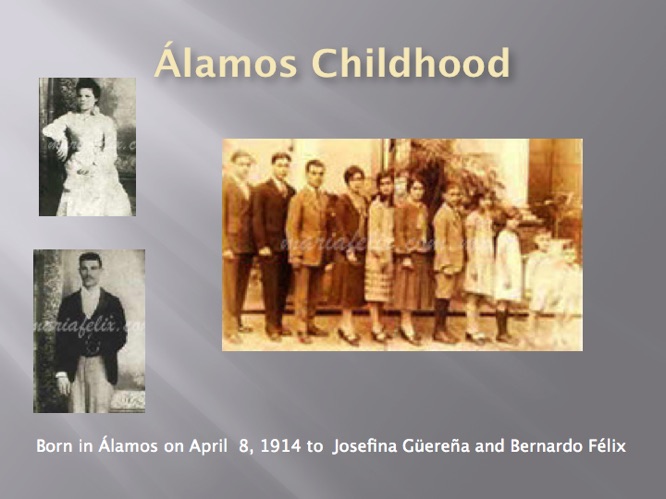
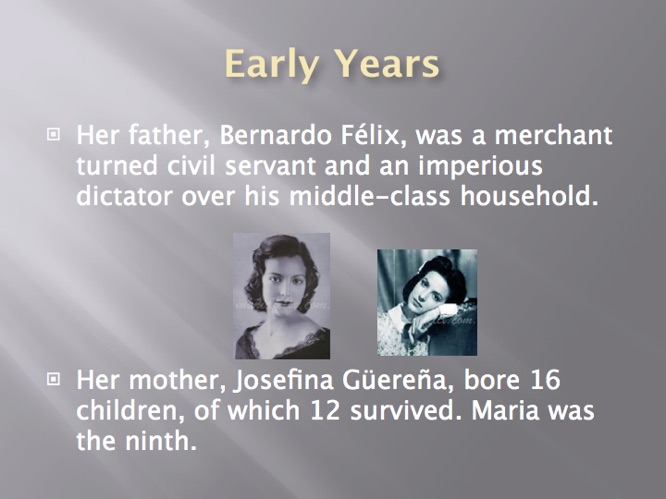



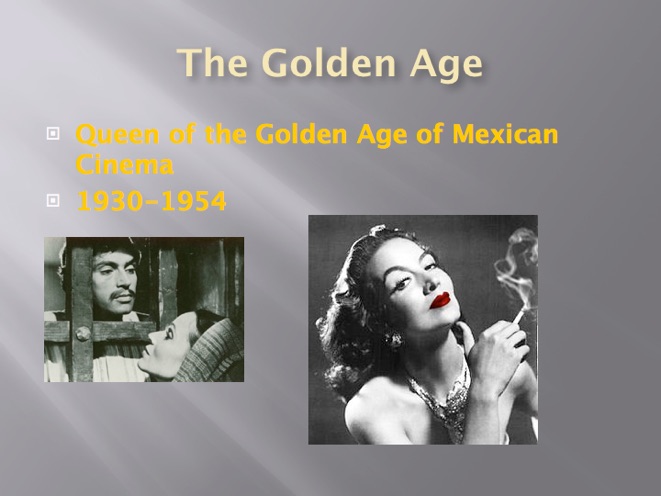

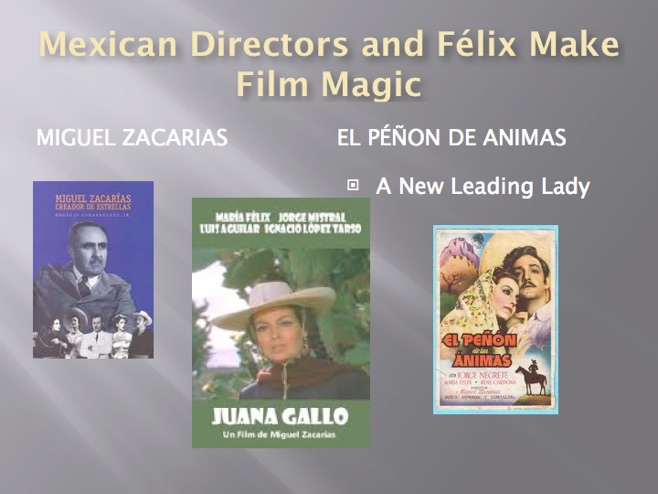

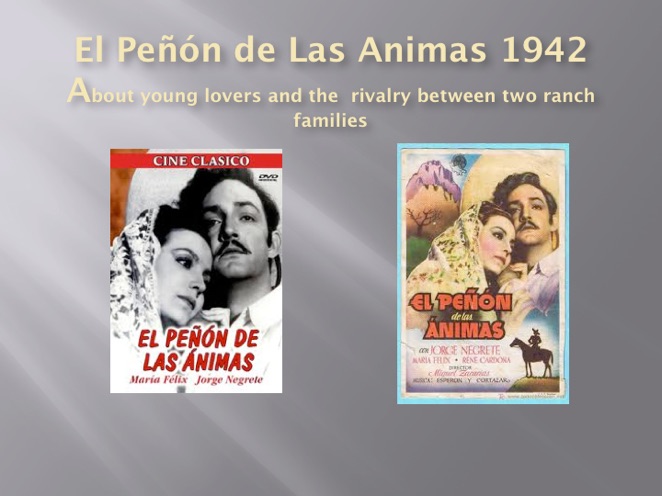
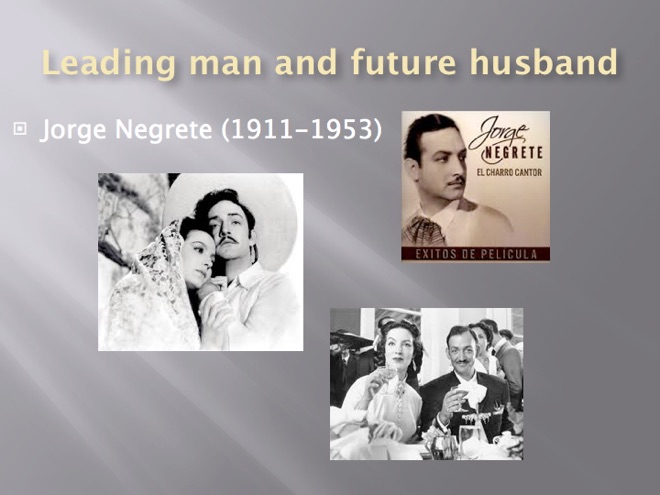
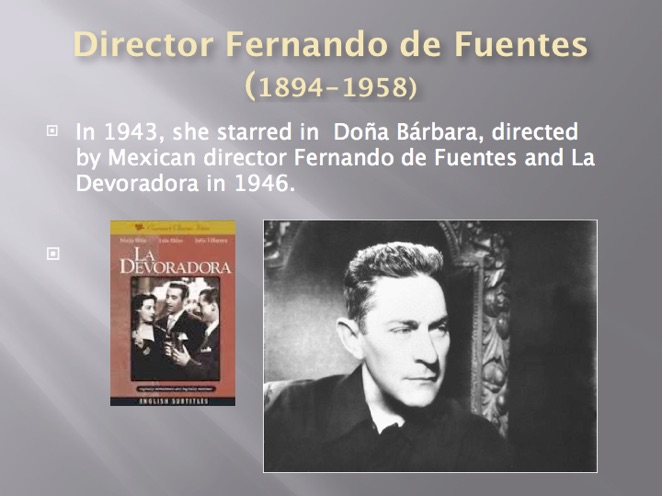



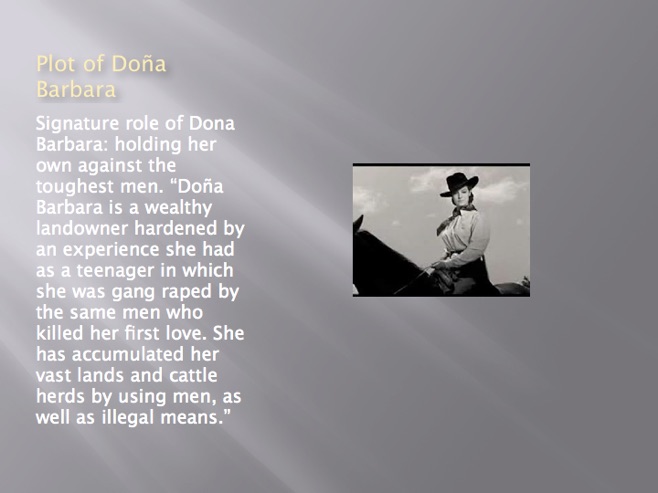
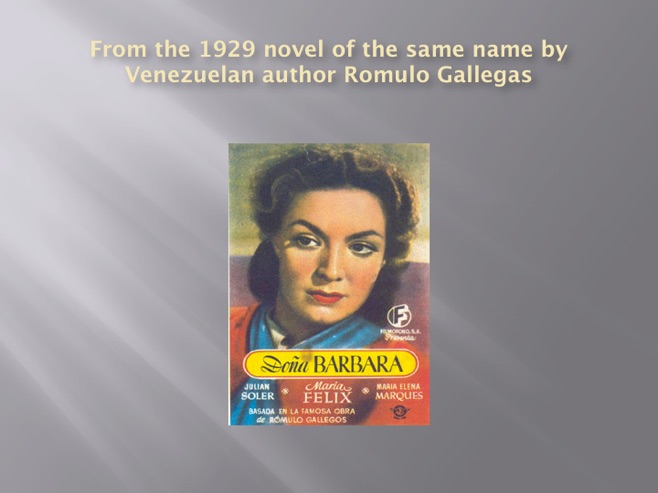



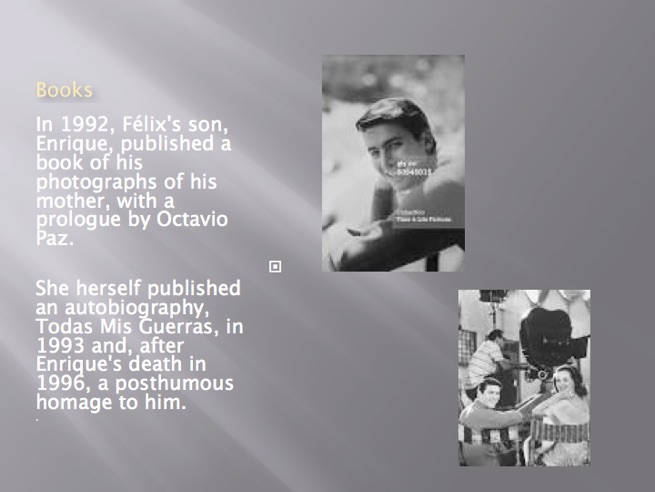
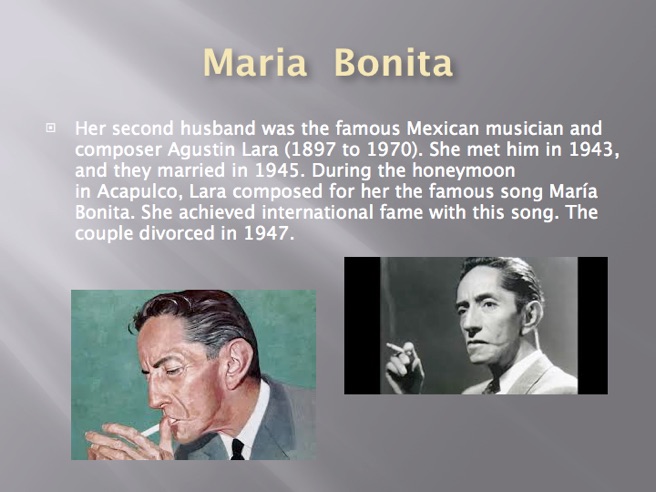
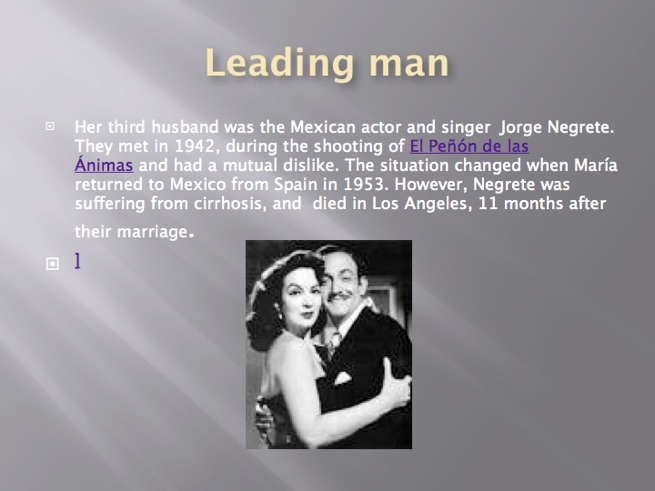

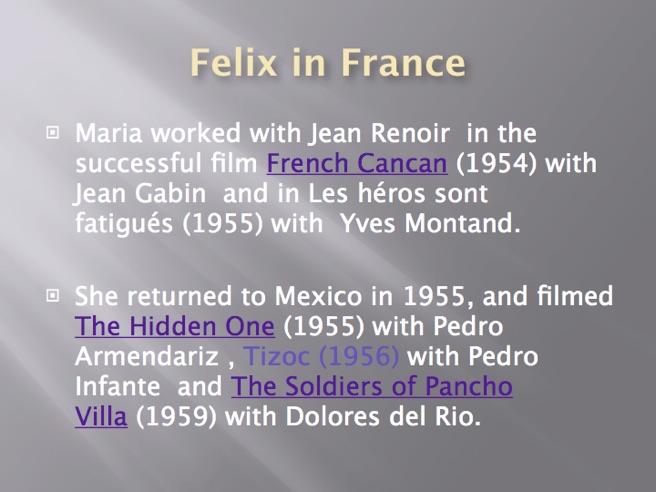
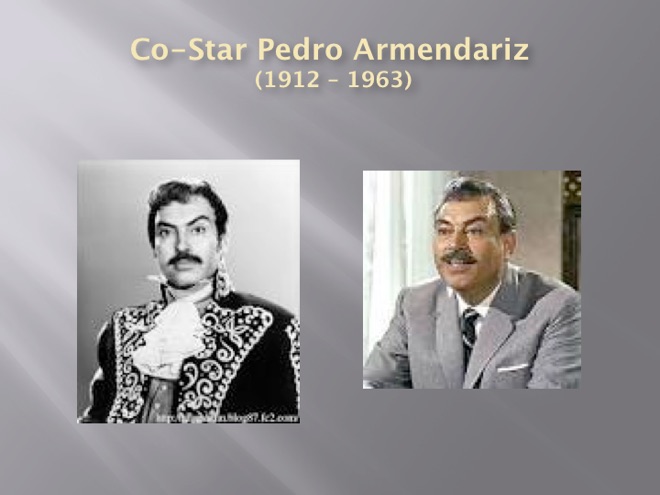
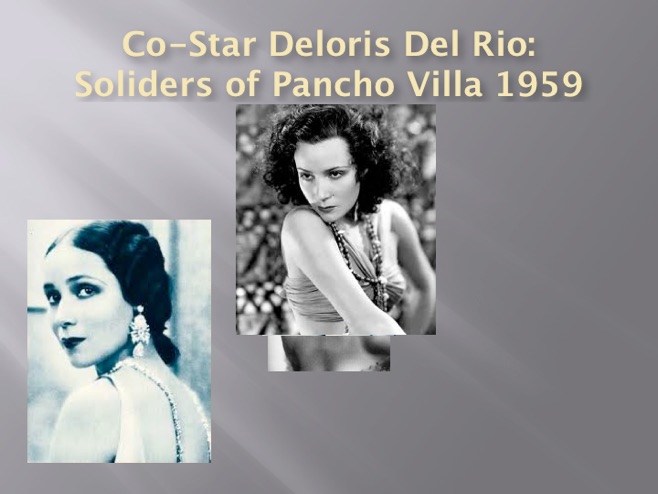
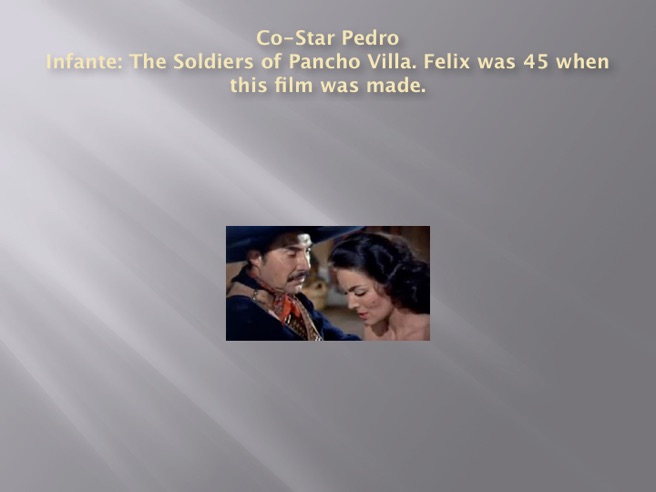
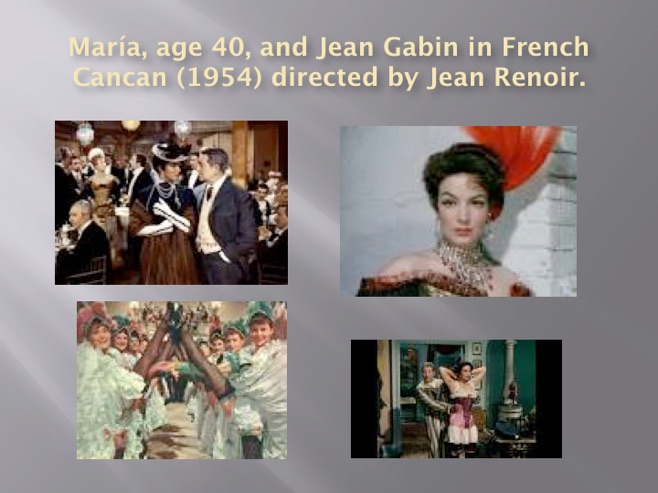
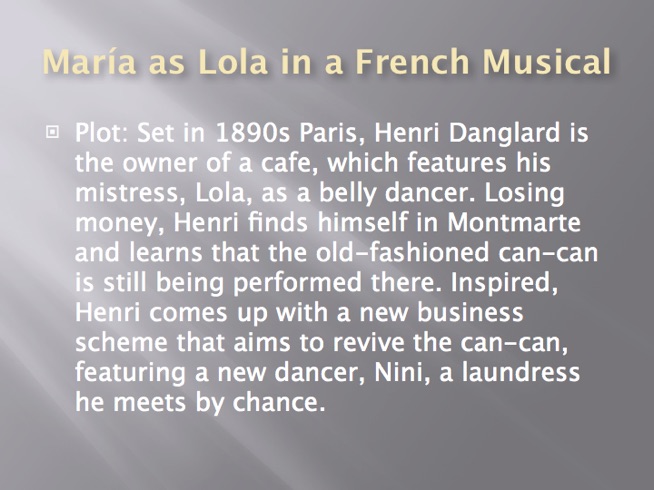
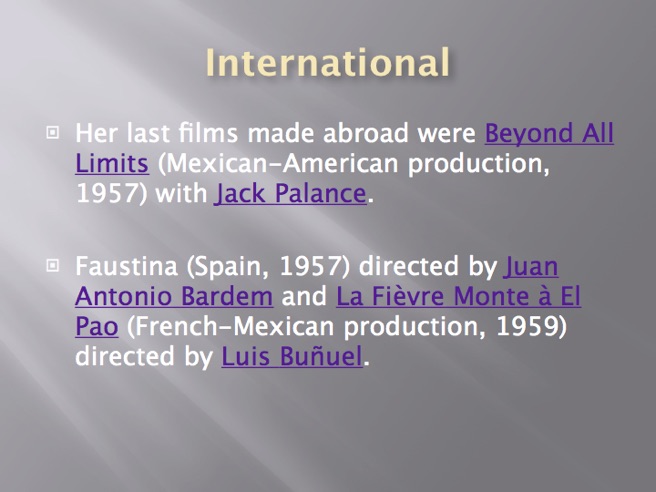

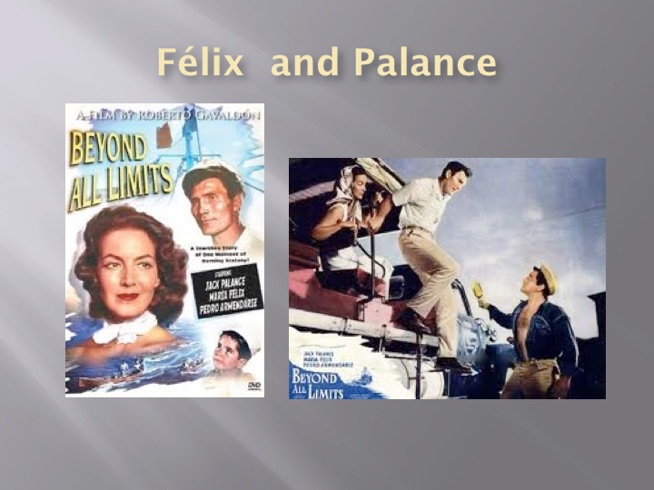
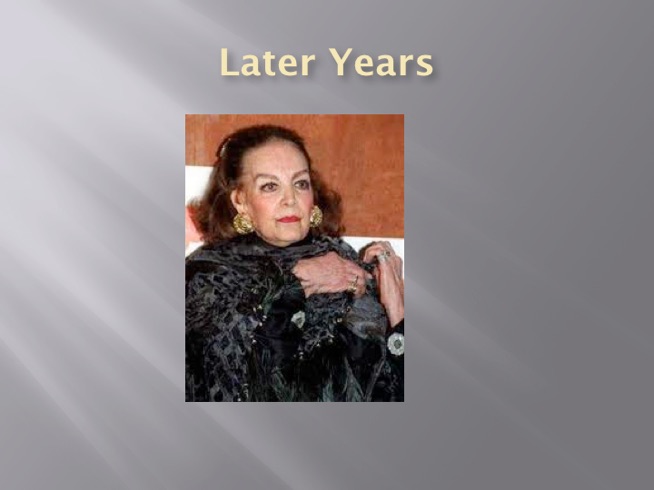

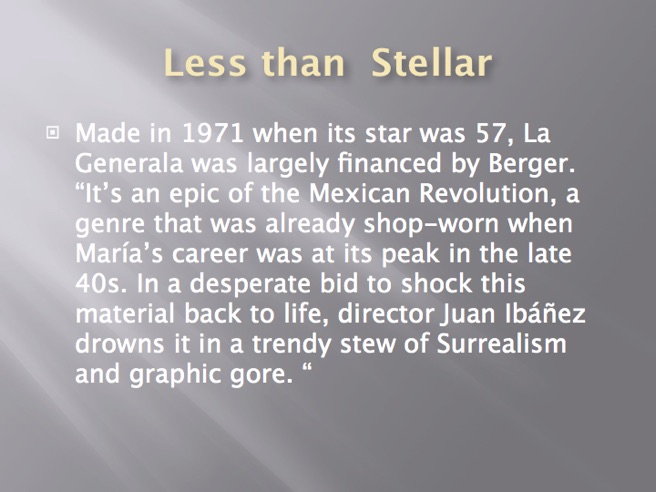
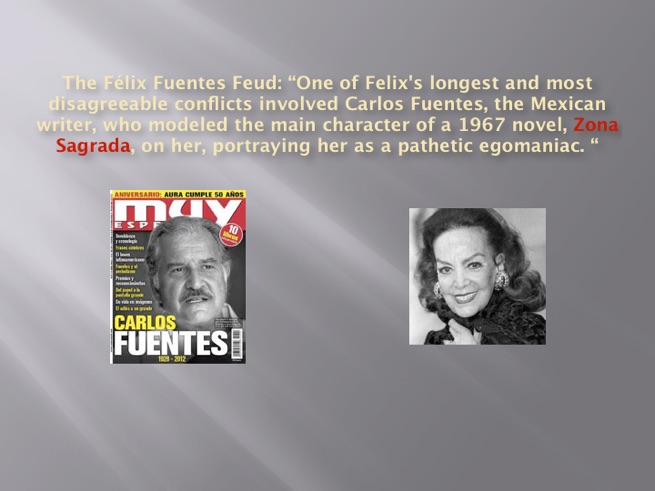
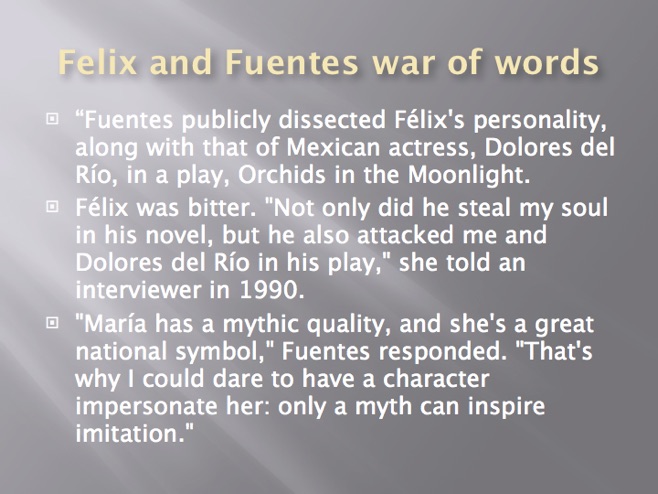


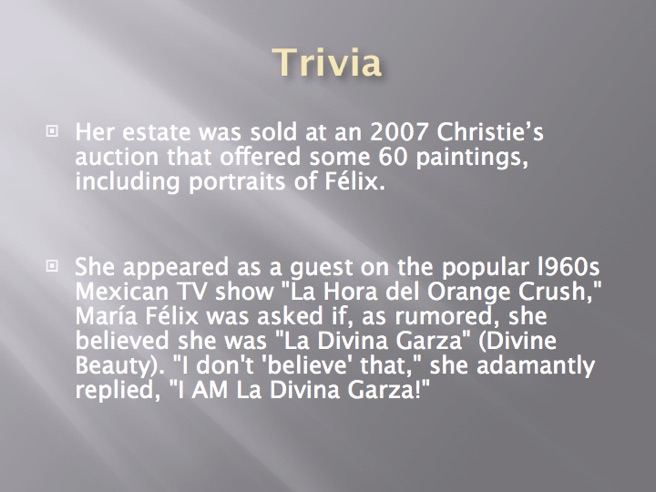


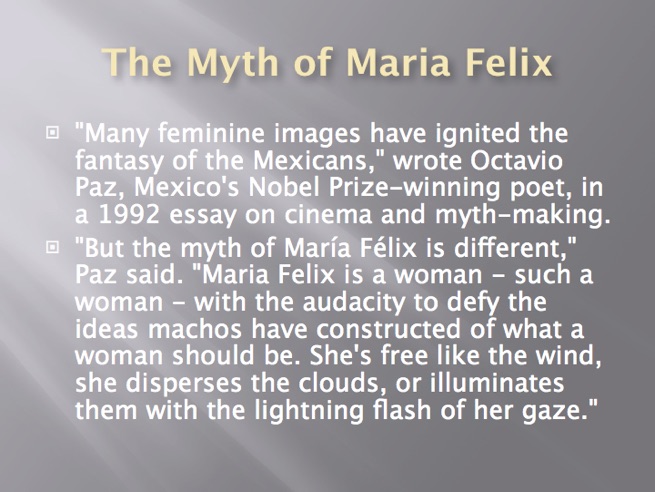
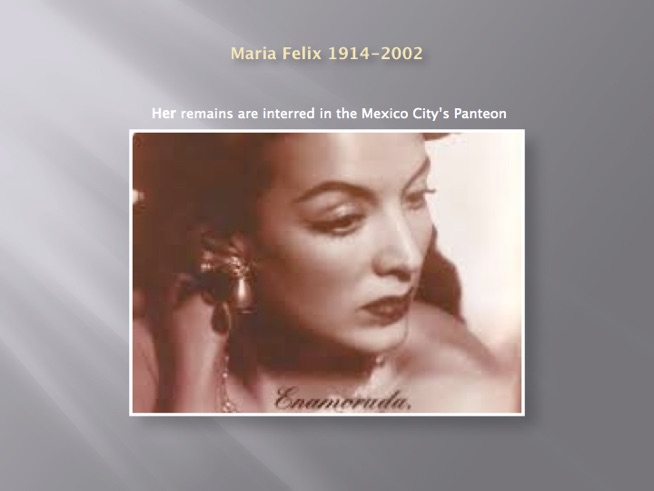
_______________________________________________
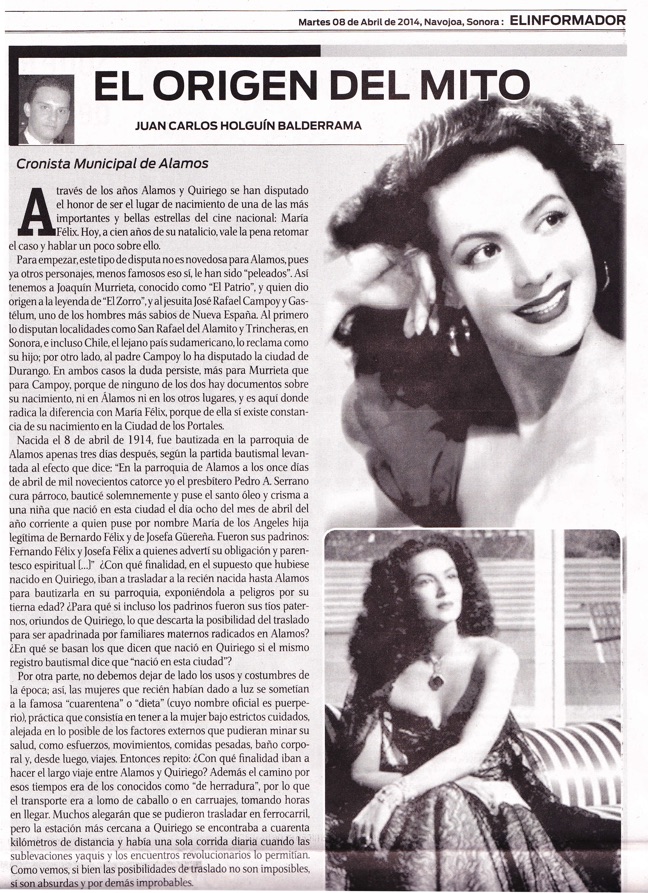
_______________________________________________
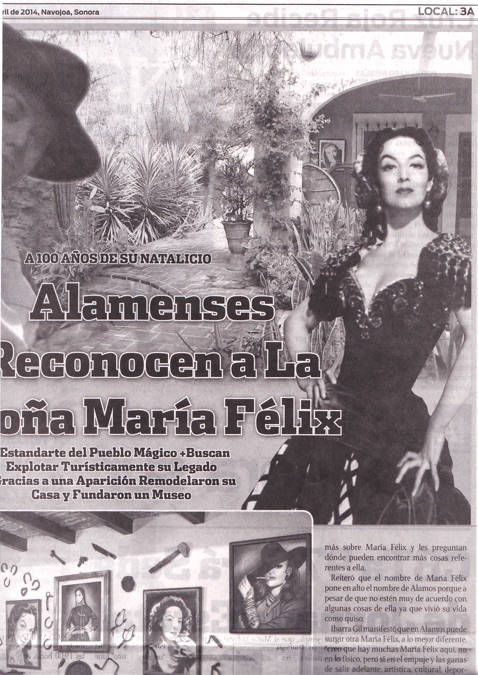

_______________________________________________


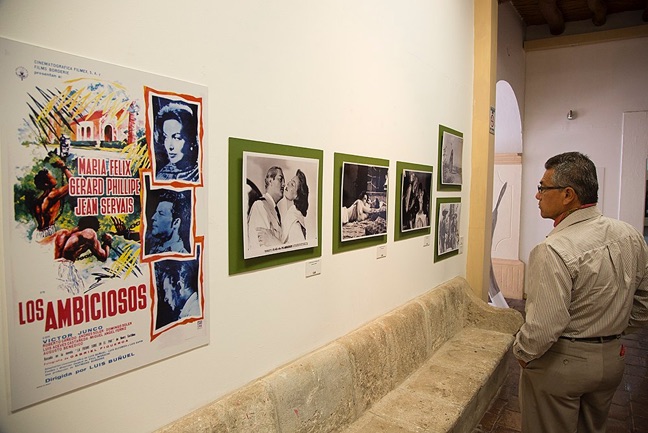
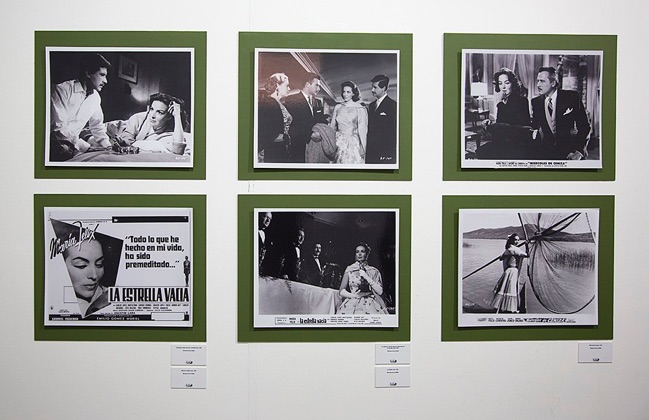
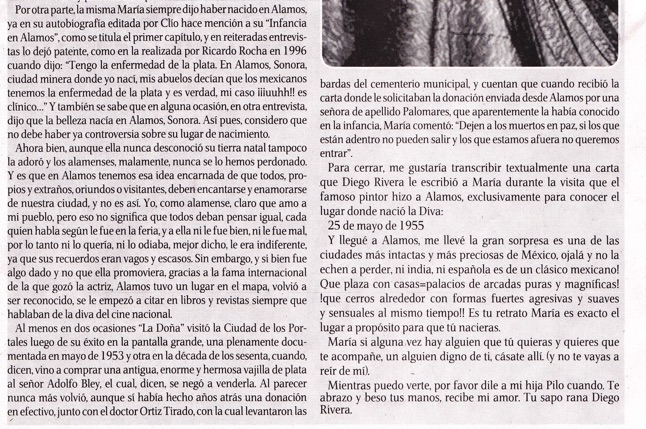
GO TO:
Alfonso Ortiz Tirado

Maria Félix: ¿Álamos o Quiriego?
por Álamos Cronista Juan Carlos Holguín Balderrama
A través de los años Álamos y Quiriego se han disputado el honor de ser el lugar de nacimiento de una de las más importantes y bellas estrellas del cine nacional: María Félix. Para empezar, este tipo de disputa no es novedosa para nuestra ciudad, pues ya otros personajes, menos famosos sí, le han sido “peleados”; así, tenemos a Joaquín Murrieta, conocido como “El Patrio” y quien dio origen a la leyenda de “El Zorro”, y al Jesuita José Rafael Campoy y Gastélum, uno de los hombres más sabios de Nueva España. Al primero lo disputan localidades como San Rafael del Alamito y Trincheras, en Sonora, e incluso Chile, el lejano país sudamericano, lo reclama como su hijo; por otro lado al padre Campoy lo ha disputado la ciudad de Durango. En ambos casos la duda persiste, más para Murrieta que para Campoy, porque de ninguno de los dos hay documentos sobre su nacimiento, ni en Álamos ni en los otros lugares, y es aquí donde radica la diferencia con María Félix, porque de ella sí existe constancia de su nacimiento en la Ciudad de los Portales.
Nacida el 8 de abril de 1914, fue bautizada en la parroquia de Álamos apenas tres días después, según la partida bautismal levantada al efecto que dice: “En la parroquia de Álamos a los once días de abril de mil novecientos catorce yo el presbítero Pedro A. Serrano cura párroco, bauticé solemnemente y puse el santo óleo y crisma a una niña que nació en esta ciudad el día ocho del mes de abril del año corriente a quien puse por nombre María de los Ángeles hija legítima de Bernardo Félix y de Josefa Güereña. Fueron sus padrinos: Fernando Félix y Josefa Félix a quienes advertí su obligación y parentesco espiritual […]” ¿Con qué finalidad, en el supuesto que hubiese nacido en Quiriego, iban a trasladar a la recién nacida hasta Álamos para bautizarla en su parroquia con apenas tres días de nacida? ¿Para qué si incluso los padrinos fueron sus tíos paternos, oriundos de Quiriego, lo que descarta la posibilidad del traslado para ser apadrinada por familiares maternos radicados en Álamos? ¿En qué se basan los que dicen que nació en Quiriego si el mismo registro bautismal dice que “nació en esta ciudad”?
Por otra parte, no debemos dejar de lado los usos y costumbres de la época, así, las mujeres que recién habían dado a luz se sometían a la famosa “cuarentena” o “dieta” (cuyo nombre oficial es puerperio), práctica que consistía en tener a la mujer bajo estrictos cuidados, alejada en lo posible de los factores externos que pudieran minar su salud, como esfuerzos, movimientos, comidas pesadas, baño corporal y, desde luego, viajes. Entonces ¿Con qué finalidad iban a hacer el largo viaje entre Álamos y Quiriego? Además el camino por esos tiempos era de los conocidos como “de herradura” por lo que el transporte era a lomo de caballo o en carruajes, tomando horas en llegar. Muchos alegarán que se pudieron trasladar en ferrocarril, pero la estación más cercana a Quiriego se encontraba a cuarenta kilómetros de distancia y había una sola corrida diaria, cuando las sublevaciones yaquis y los encuentros revolucionarios lo permitían. Como vemos, si bien las posibilidades de traslado no son imposibles, sí son absurdas y por demás improbables. También han dicho que el hecho de que se haya levantado el acta del registro civil en Álamos, responde a que en Quiriego no había oficina de registro, cosa falsa, puesto que el archivo del registro civil de ese municipio inicia en la década de 1880.
Por otro lado, la misma María siempre dijo haber nacido en Álamos, ya en su autobiografía editada por Clío hace mención a su “Infancia en Álamos” como se titula el primer capítulo y en reiteradas entrevistas lo dejó patente, como en la realizada por Ricardo Rocha en 1996 cuando dijo: “Tengo la enfermedad de la plata. En Álamos, Sonora, ciudad minera donde yo nací, mis abuelos decían que los mexicanos tenemos la enfermedad de la plata y es verdad, mi caso ¡¡¡uuhh!! es clínico…” En otra ocasión con el mismo periodista al decirle que ella pudo haber nacido en cualquier parte ella contestó: “no, no, te equivocas, yo he de haber nacido en Sonora, en mi tierra de Álamos con mis montañas, con mi aire, ahí yo creo que nace la belleza.” Así pues, considero que no debe haber ya controversia sobre su lugar de nacimiento.
Ahora bien, aunque ella nunca desconoció su tierra natal tampoco la adoró y los alamenses, malamente, nunca se lo hemos perdonado. Y es que en Álamos tenemos esa idea encarnada de que todos, propios y extraños, oriundos o visitantes, deben encantarse y enamorarse de nuestra ciudad, y no es así, yo, como alamense, claro que amo a mi pueblo, pero eso no significa que todos deban pensar igual. Como dice el dicho “cada quien habla según le fue en la feria”, y a ella ni le fue bien, ni le fue mal, por lo tanto ni lo quería, ni lo odiaba, mejor dicho le era indiferente, ya que sus recuerdos eran vagos y escasos. Sin embargo, y si bien fue algo dado y no que ella promoviera, gracias a la fama internacional de la que gozó la actriz, Álamos tuvo un lugar en el mapa, volvió a ser reconocido, se le empezó a citar en libros y revistas siempre que hablaban de la diva del cine nacional.
Al menos en dos ocasiones “La Doña” visitó la Ciudad de los Portales luego de su éxito en la pantalla grande, una plenamente documentada en mayo de 1953 y otra en la década de los sesenta, cuando, dicen, vino a comprar una antigua, enorme y hermosa vajilla al señor Adolfo Bley, el cual, dicen, se negó a venderla. Al parecer nunca más volvió, aunque sí había hecho años atrás una donación en efectivo, junto con el doctor Ortiz Tirado, con la cual levantaron las bardas del cementerio municipal, y cuentan que cuando recibió la carta donde le solicitaban la donación enviada desde Álamos por una señora de apellido Palomares, que aparentemente la había conocido en la infancia, María comentó: “Dejen a los muertos en paz, si los que están adentro no pueden salir y los que estamos afuera no queremos entrar”.
Para cerrar, me gustaría transcribir textualmente una carta que Diego Rivera (copiado debajo) le escribió a María durante la visita que el famoso pintor hizo a Álamos, exclusivamente para conocer el lugar donde nació la Diva:
“25 de mayo de 1955
Y llegué a Álamos, me llevé la gran sorpresa es una de las ciudades más intactas y más preciosas de México, ojalá y no la echen a perder, ni india, ni española es de un clásico mexicano! Que plaza con casas=palacios de arcadas puras y magníficas! !que cerros alrededor con formas fuertes agresivas y suaves y sensuales al mismo tiempo!! Es tu retrato María es exacto el lugar a propósito para que tú nacieras.
María si alguna vez hay alguien que tu quieras y quieres que te acompañe, un alguien digno de ti, cásate allí. (y no te vayas a reír de mi).
Mientras puedo verte, por favor dile a mi hija Pilo cuando. Te abrazo y beso tus manos, recibe mi amor.
Tu sapo rana Diego Rivera.”
___________________________________
primera foto de María a los ocho meses de edad
(first picture of María - eight months of age)
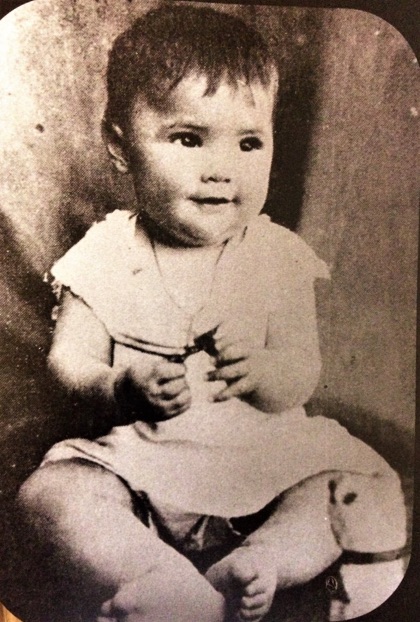
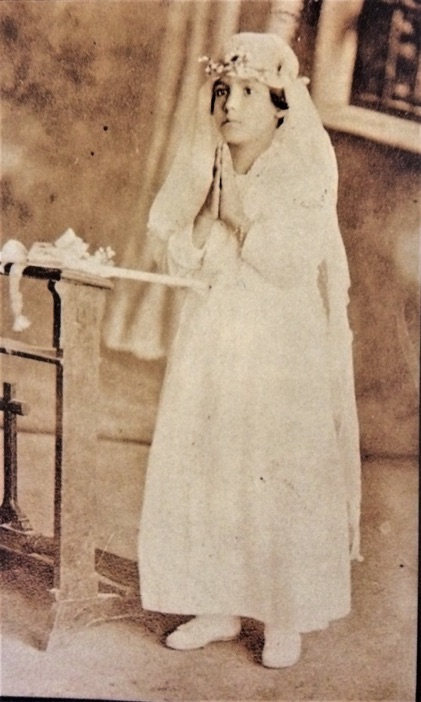
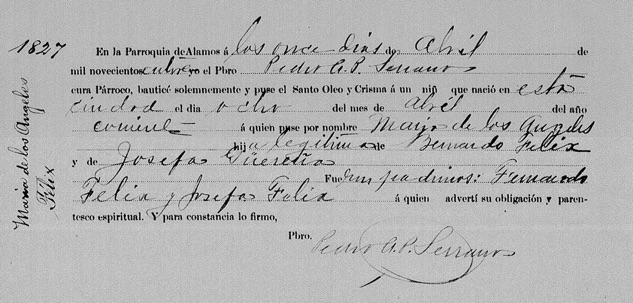
partida de bautismo de María • (baptism certificate of María)
primera comunión de María Félix - Álamos
(first communion of María Félix - Álamos)

la familia Félix Güereña en Álamos, María está entre las piernas de su papá
(the Félix Güereña family in Álamos with María in her father’s arms)

María de visita en Álamos en 1953
(María visitng Álamos in 1953)
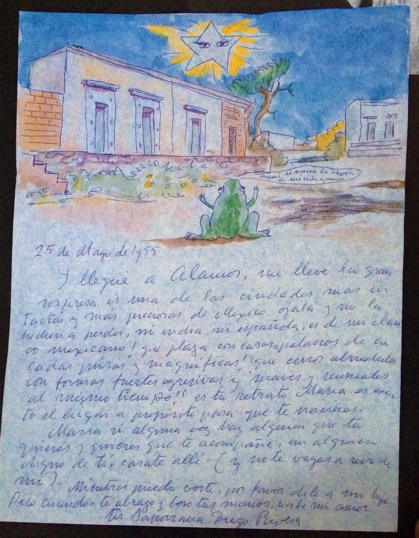
Carta de Diego Rivera (con la casa de María pintada en acuarela) enviada desde Álamos en 1955. • The letter written by Diego Rivera (with the Maria Félix house in the background) sent from Álamos in 1955.
________________________________________________
María Félix: Álamos or Quiriego?
by Álamos historian Juan Carlos Holguín Balderrama
Over the years Álamos and Quiriego have disputed the honor of being the birthplace of one of the most important and beautiful stars of the national cinema: María Félix. To begin with, this type of dispute is not exclusive to our city, because with other cities we have dual claims to people less famous. Two examples are Joaquín Murrieta, known as “El Patrio” and who gave rise to the legend of “El Zorro,” and the Jesuit José Rafael Campoy y Gastélum, one of the wisest men in New Spain. The first is disputed by towns such as San Rafael del Alamito and Trincheras, in Sonora, and even Chile, the distant South American country, claims him as a son. On the other hand, Father Campoy has also been claimed by the city of Durango. In both cases the doubt persists, more for Murrieta than for Campoy, because in both cases there are no documents about their birth—neither in Álamos nor in the other places, and this is where the difference with María Félix lies: there is proof of her birth in “la Ciudad de los Portales.”
Born April 8, 1914, she was baptized in the parish of Álamos just three days later, according to the baptismal certificate which says: “In the parish of Álamos on the 11th day of April, 1914, I, Pedro A. Serrano, parish priest, solemnly baptized and placed the holy oil and “chrisma” on a girl who was born in this city on the eighth day of the month of April of the current year, whom I named María de los Ángeles, the legitimate daughter of Bernardo Félix and Josefa Güereña. Her godparents were Fernando Félix and Josefa Félix, to whom I instructed of their obligation and spiritual kinship.” Why would the parents, if she had been born in Quiriego, have taken the newborn to Álamos three days after her birth to be baptized? The fact that the godparents were both residents of Quiriego rules out the possibility of a transfer because the godparents lived in Álamos. On what basis can those who claim she was born in Quiriego have when the baptismal record says that she was “born in this city?”
We must also not forget that, in the customs of the time, women who had recently given birth underwent the famous “quarantine” or “diet” (under the official name “puerperium” ), a practice that consisted of having the woman under strict care, away as far as possible from external factors that could undermine her health—such as efforts, movement, heavy meals, bathing, and, of course, travel. So why would they make the long journey between Quiriego and Álamos? Also, the road at that time was known as “horseshoe,” and a trip could only be made on horseback or in carriages, taking hours to arrive. Many will argue that they could have gone by rail, but the closest train station to Quiriego was 40 kilometers away and there was only one daily run when the Yaqui uprisings and the revolutionary meetings allowed it. As we can see, although it is not impossible that she was born in Quiriego and transferred to Álamos, it is an absurd and otherwise improbable assumption. It has also been said that she was transferred to Álamos because there was no civil registry in Quiriego, which is false, since the civil registry file of that municipality began in the 1880s.
In addition, María always said that she had been born in Álamos. Her autobiography, edited by Clío, makes mention of her “Childhood in Álamos,” as the first chapter is titled, and in repeated interviews she let it stand, as the one made by Ricardo Rocha in 1996 when she said: “I have the disease of silver. In Álamos, Sonora, a mining city where I was born, my grandparents said that Mexicans have the disease of silver and it is true; in my case (ugh!) it’s clinical!”
On another occasion with the same journalist who asked if she could have been born anywhere, she replied: “No, no…I must have been born in Sonora, in my land of Álamos with my mountains, with my air, a place I believe where beauty was born.”
Although she never ignored her home town, she did not adore it, and the “alamenses,” unfortunately, have never forgiven her. Here in Álamos we have this incarnated idea that all, our own and strangers, native or visitors, should love and fall in love with our city, and that’s not right. As an “alamense” I, of course, love my people, but that does mean that everyone should think the same way. As the saying goes, “everyone talks as they did at the fair,” and she did not speak of Álamos well, nor did she speak of it badly—she did not love or hate Álamos but rather was indifferent, since her memories were vague and scarce. However, and although she didn’t promote Álamos, thanks to the international fame the actress enjoyed, Álamos had a place on the map, was rediscovered, and it was always noted in books and magazines with stories about the diva of national cinema.
On at least two occasions “La Doña” visited Álamos after her success on the big screen, one fully documented in May, 1953, and another in the 1960s when, they say, she came to buy an ancient, enormous, and beautiful tableware set from Adolfo Bley who, they say, refused to sell it. Apparently she never returned, although she had made a cash donation years ago, along with Dr. Ortiz Tirado, to increase the height of the walls of the municipal cemetery. They say that when she received the letter requesting the donation from a lady named Palomares, who she had apparently known in childhood, María commented: “leave the dead in peace, if those inside cannot leave and those of us outside do not want to enter.”
To close, I would like to transcribe verbatim a letter that Diego Rivera wrote to María during the visit that the famous painter made to Álamos, specifically to know the place where the Diva was born.
Mayo, 1955
And I arrived in Álamos, and I was surprised to see one of the most intact and most beautiful cities in Mexico, neither Indian nor Spanish but classic Mexican, which hopefully will not be spoiled. What a plaza with houses—palaces—of pure and magnificent arcades! The surrounding hills are strongly aggressive and soft and sensual at the same time. It is your portrait, María—precisely the place you were destined to be born. María, if there is ever someone you want, and you want me to accompany you, someone worthy of you, marry him there (and do not laugh at me)! Please tell my daughter Pilo when I can see you again. I hug you and kiss your hands, and please receive my love.
Your frog toad,
Diego Rivera
__________________________________________________
la primera foto de María Félix, ocho meses de edad - ( The first picture of María Félix, taken when she was eight months old)
primera comunión de María Félix en Álamos •( The first communion of María Félix in Álamos)